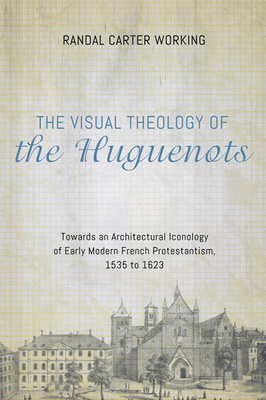You are here
Back to topThe Visual Theology of the Huguenots (Hardcover)
$48.00
Usually Ships in 1-5 Days
Description
The role of architecture within the French Reformed tradition has been of recent scholarly interest, seen in the work of Helene Guicharnaud, Catharine Randall, Andrew Spicer, and others. Few, however, have explored in depth the relationship between Reformed theology and architectural forms. This thesis explores the roots of Reformed aesthetics, set against the background of late medieval church architecture. The work of Serlio is demonstrably important in the spreading of the ideas of Vitruvius, indicating the influence of classical Roman building on French Reformed architecture. There follows an examination of five important Huguenot architects: Philibert de l'Orme, Bernard Palissy, Jacques-Androuet du Cerceau, Salomon de Brosse, and Jacques Perret. We then undergo a comparative examination of three churches: St. Pierre in Geneva, a medieval church overhauled by the Reformers; St. Gervais-St. Protais, a Parisian Catholic church whose facade was completed by the French Reformed architect Salomon de Brosse; and the temple at Charenton, a structure also designed and built by de Brosse. These three buildings reveal the contribution of Huguenot architecture, a distinct language that gave expression to Reformed theological ideas and helped bring about the renewal of classicism in France. ""Working has written a groundbreaking study on the influence of the Huguenot Reformed theology on the development of neo-classical architecture and formal gardens. He demonstrates the importance of Serlio in disseminating the classical ideas of Vitruvius, and the role of Philibert de l'Orme, Bernard Palissy, and Saloman de Brosse in using these ideas to create grand buildings and gardens that recall the delights of Eden. A major contribution to understanding the visual culture of early Calvinism."" --William Dyrness, Professor of Theology and Culture, Fuller Theological Seminary ""Through a rich and nuanced exploration that focuses especially on Huguenot church architecture, Working insightfully points the way to a Reformed perspective that recognizes the need to promote 'holiness through space.' A seminal work "" --Richard J. Mouw, President Emeritus, Professor of Faith and Public Life, Fuller Theological Seminary ""This rich exploration of the link between architecture and worship, helpfully illustrated with woodcuts and drawings, sets the particular contribution of the Huguenots in the context of Western Christendom as a whole. Working's insight into theologically shaped spaces holds great potential for equipping God's people for the mission of the church, and is a timely word in a time where worship spaces are often shaped by the culture of performance and entertainment."" --James R. Edwards, Bruner-Welch Professor Emeritus of Theology, Whitworth University Randal Working graduated from Whitworth University with a major in art. He received a Master of Fine Arts from the University of Washington, and the Master of Divinity, Doctor of Ministry, and PhD in Theology from Fuller Theological Seminary. Working serves as the pastor of Lompoc Presbyterian Church in California. He is adjunct professor for Fuller and has taught for Seattle Pacific University and Ashland Theological Seminary. He and his wife, Evelyne, have three children.
About the Author
Randal Working graduated from Whitworth University with a major in art. He received a Master of Fine Arts from the University of Washington, and the Master of Divinity, Doctor of Ministry, and PhD in Theology from Fuller Theological Seminary. Working serves as the pastor of Lompoc Presbyterian Church in California. He is adjunct professor for Fuller and has taught for Seattle Pacific University and Ashland Theological Seminary. He and his wife, Evelyne, have three children.
